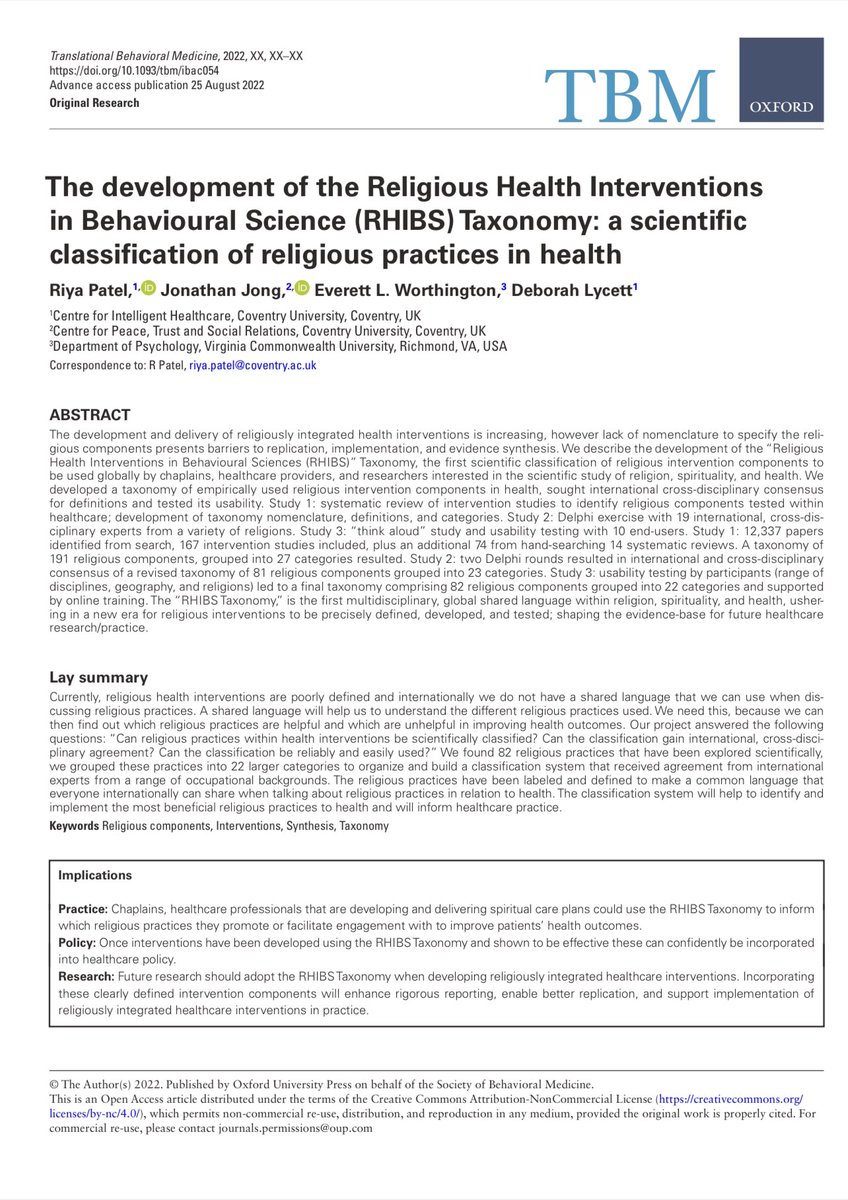
📣 I am elated to announce this publication! The #RHIBSTaxonomy paper has now been published! After so many years in the making, it’s so good to finally see the #RHIBSTaxonomy published and available for public use #taxonomy #TBM #religion #spirituality #healthcare #interventions 

The #RHIBSTaxonomy is the first multidisciplinary, global shared language within religion, spirituality, and health, ushering in a new era for religious interventions to be precisely defined, developed, and tested; shaping the evidence-base for future healthcare research/practice
To develop the taxonomy; We answered the following questions: “Can religious practices within health interventions be scientifically classified? Can the classification gain international, cross-disciplinary agreement? Can the classification be reliably and easily used?
We found 82 religious practices that have been explored scientifically, we grouped these practices into 22 larger categories to organize and build a classification system that received agreement from international experts from a range of occupational backgrounds.
The religious practices have been labeled and defined to make a common language that everyone internationally can share when talking about religious practices in relation to health. The classification system will help to identify and implement the most beneficial practices
Implications for practice: Chaplains, healthcare professionals that are developing and delivering spiritual care plans could use the RHIBS Taxonomy to inform which religious practices they promote or facilitate engagement with to improve patients’ health outcomes.
Implications for Policy: Once interventions have been developed using the RHIBS Taxonomy and shown to be effective these can confidently be incorporated into healthcare policy.
Future research should adopt the #RHIBSTaxonomy when developing religiously integrated interventions. Incorporating these clearly defined intervention components will enhance rigorous reporting, enable better replication, and support implementation of these in healthcare.
Finally a link to the paper: academic.oup.com/tbm/advance-ar…
@threadreaderapp unroll
@UKSBM_ECN @UKSBM @EHPSociety @divhealthpsych @APA @templeton_fdn @PewReligion @BehavioralMed @WPA_Psychiatry please retweet
• • •
Missing some Tweet in this thread? You can try to
force a refresh



